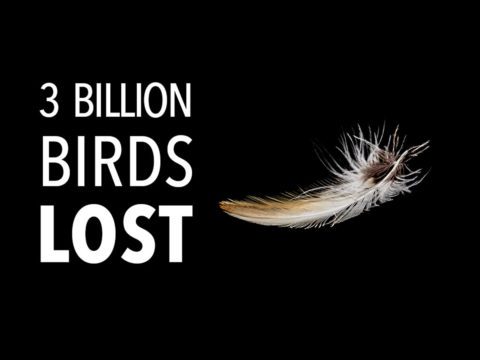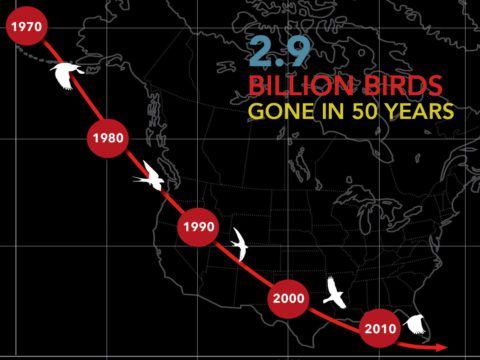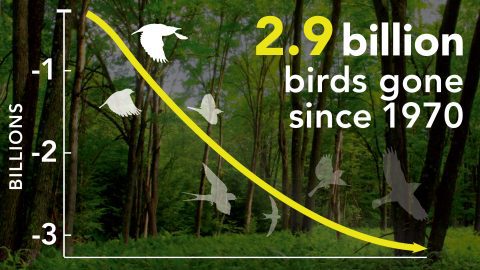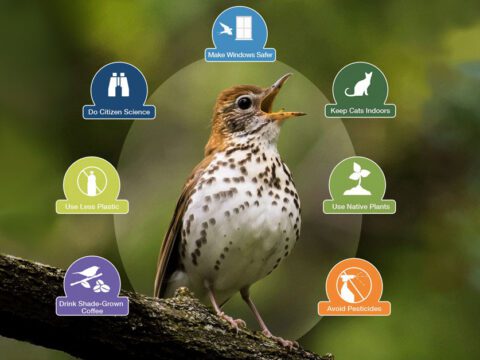View from Sapsucker Woods: Birding’s “Choir” Must Become a Force for Change
By John Fitzpatrick
September 19, 2019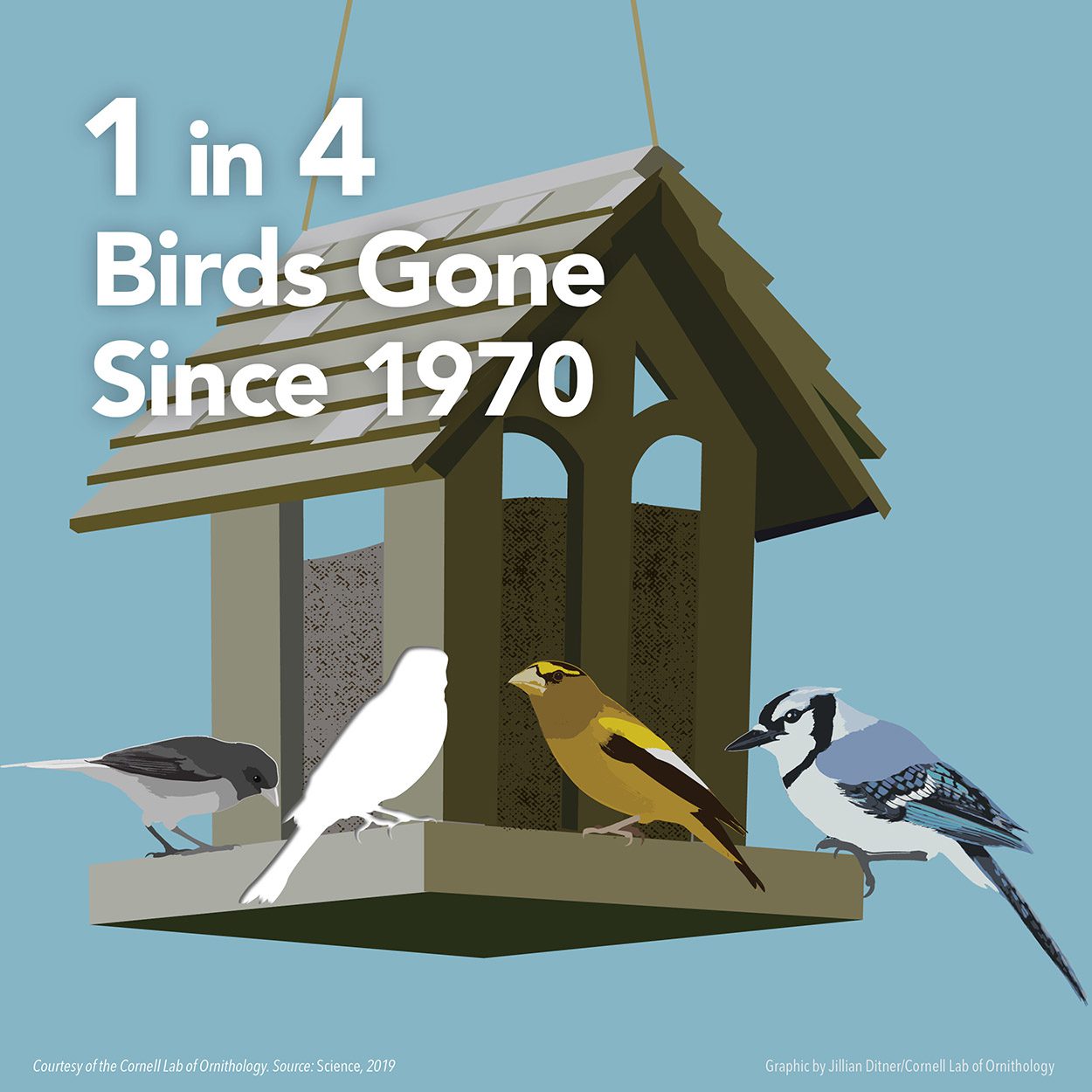
From the Autumn 2019 issue of Living Bird magazine. Subscribe now.
Ladies and gentlemen of the choir, this is not a drill, this is an actual alert. I repeat, THIS IS AN ACTUAL ALERT! I refer to the unprecedented, grim statistics on bird population declines recently published in the prestigious journal Science by a consortium of biologists, led by two scientists from the Cornell Lab of Ornithology (see our Living Bird story Vanishing: More Than 1 in 4 Birds Have Disappeared in 50 Years).
The fact that you are reading this column in a bird magazine suggests that you are indeed a member of a choir that has truly enormous potential for influencing human attitudes and behavior. Detailed surveys of outdoor recreational habits across the United States routinely estimate that there are at least 50 million of us who regularly view wild birds, and who cherish the many values they provide. Moreover, these surveys also show that we represent every socioeconomic class and every political persuasion. This means that our collective voices—if we could finally raise them in orchestrated and prolonged harmony—constitute a potentially powerful force for change. It is high time for us to raise our voices in support of all the steps required to halt and eventually reverse the steady erosion of North America’s bird populations.
Like many other members of this choir, I often get together with others like me. I go on occasional group birding tours, and sometimes attend birding festivals. I enjoy the outdoors with many friends who are just casually familiar with birds but who appreciate learning more about them. Every winter I provide chili for our annual potluck “countdown dinner” to compile Christmas Bird Count sightings. In all such settings, we often talk with one another about how bird numbers seem to be dropping, and about all the problems they face (windows, cats, systemic pesticides, coastal development, horizon-to-horizon agriculture, etc.). The problem is, all this talk among ourselves—all this mutual preaching within our own choir—accomplishes only marginal good, if any at all. As choir members, we already understand.
It is time for us to unite, to lift our collective voices, and to direct them outward to all the social, industrial, and political worlds that surround us, for now we actually know how bad the problem has gotten. We have lost almost a third of our nation’s wild birds since 1970. The scale of this loss is comparable to the disappearance of the Passenger Pigeon, once the most abundant bird in the world, and the trend is continuing. Never has it been more urgent for all of us who value wild birds and the habitats they represent to become an organized movement demanding social change. Birds convey vital messages about environmental health, and they play profoundly important roles for human well being. The cover story featured in this sobering issue of Living Bird serves as a clarion call. We must begin singing in risoluto voce, individually and together, in every possible forum, before it is too late.
Do we really have the numbers to effect social changes? To put the size of our choir in perspective with several other socially influential groups, in 2018 our numbers in the U. S. alone exceeded those of gun-owning households (about 35 million), AARP members (38 million), registered Democrats (44 million), and registered Republicans (33 million).
Find out More
Do we have specific causes that we should be singing (and voting) about? Absolutely! The decline of our North American wild bird populations is a classic example of “death by a thousand cuts” and our choir needs to become vocal about all of them. The litany is lengthy, but let me illustrate with a few starting verses: stop tolerating unleashed outdoor housecats; outlaw and eradicate feral cat colonies; advocate and install bird-friendly window glass; reduce big city lights during migration; limit and regulate systemic pesticides such as neonicotinoids; expand conservation zoning to reduce suburban sprawl; expand protections for wetlands, especially along our coasts and at interior migratory stopovers; convince large-scale agriculture to bring hedgerows back to our rural landscapes; buy shade-grown coffee; ban all recreational uses of lead; fully fund the Land and Water Conservation Fund every year, and pass and sign the Recovering America’s Wildlife Act in this Congress. (For more details on a starter list of actions you can take at home, see our Seven Simple Actions to Help Birds.)
We must stop preaching among ourselves and use organized communication to lawmakers to harness the immense powers of the ballot box. While politicians vary widely in their levels of environmental knowledge and interest, they all share one thing in common: they turn their heads and listen if choruses grow loud enough in unison. Whether our commonest birds keep getting rarer year after year is going to depend on how well we can organize our voices, and how spirited we can be in delivering our message that the trend needs to stop.

All About Birds
is a free resource
Available for everyone,
funded by donors like you
American Kestrel by Blair Dudeck / Macaulay Library
